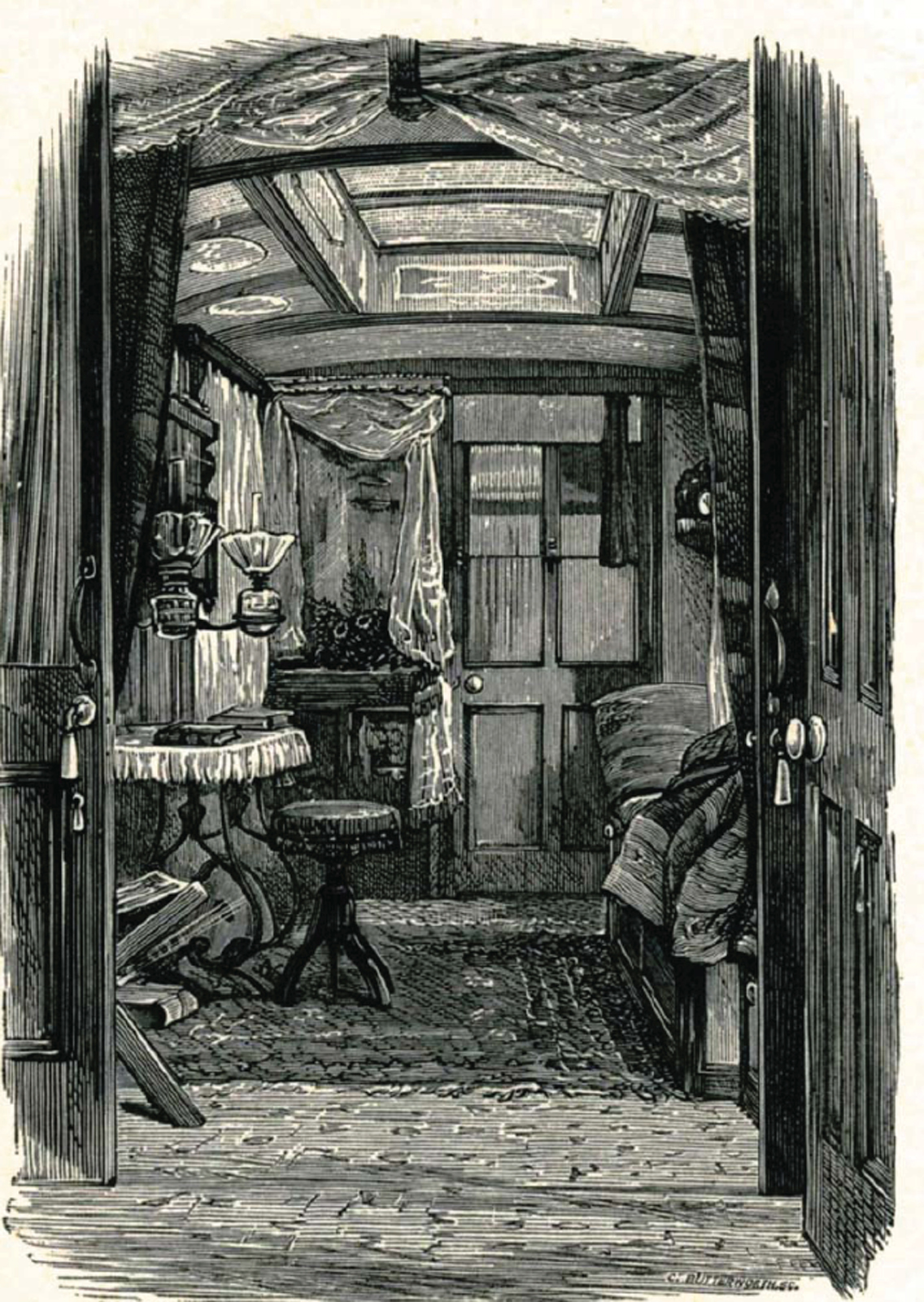

Dr Gordon Stables’ caravan, The Wanderer, its interior fitted out as a bachelor gentleman’s flat. Stables wrote several books in his caravan about his caravanning adventures.
THE IDEA OF having mobile holiday accommodation in the form of a caravan came about in the nineteenth century, amongst members of the upper class who had a romantic vision of roaming the highways and byways of Britain and sampling life as a gypsy family might do (the phrase ‘Gentleman Gypsy’ comes from this era). The difference was that their caravans were looked after by servants, who would usually be accommodated in a nearby tent – the home comforts these rich caravanners enjoyed were far removed from the realities of gypsy life.
Of course no caravan sites as such were available: a stopover meant finding a patch of land and simply making camp! Often a farmer’s field by a river was chosen and in payment eggs and milk would be purchased. This seemingly idyllic gypsy life inspired one man to write diaries of his travels – laying the foundations of the leisure touring caravan experience we know today. This pioneering caravanner was Dr Gordon Stables.
Stables designed his caravan and had it built for him by the Bristol Coach & Wagon Company in 1885. He named it ‘The Wanderer’, and it was later donated to the Caravan Club. As an ex-Navy man and writer of stories for boys, he wrote about his exploits in his ‘Land Yacht’ (connecting his travels by road with his seafaring days). His books were read with interest, and by the early 1900s the growing band of rich caravanners formed an exclusive club, which would bring like-minded people together. It was to be simply named the Caravan Club and was formed by J. Harris Stone in 1907, and grew slowly.
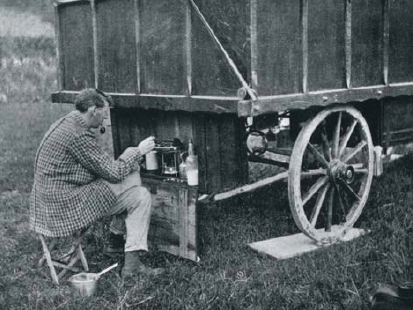
Horse-drawn caravans were popular until the First World War; this is a more primitive design with the kitchen being placed outside. This photo was taken c. 1907, at the time when the Caravan Club was founded by J. Harris Stone.
This period of time saw the true beginnings of the combustion engine. Motoring was taking off – though it was expensive – and it wasn’t long before some caravan users looked at putting a caravan body on the chassis of an early lorry or even car; this new idea was given the name ‘motorised caravan’, a name that would stick many years later. The future looked decidedly uncertain for the horse-drawn caravan, mainly because by 1914 many horses had been requisitioned for the First World War, to be used on the front lines.
Car design at this time, however, was improving fast in terms of reliability and affordability. This progress would inspire the likes of Frederick Alcock in 1914 to build a trailer caravan for his 1913 Lanchester car. Streamlined for that period, its design resembled the shape of the Sprite 14 some forty years later. Alcock didn’t put it into production, building it entirely for his own use.
The car-pulled caravan did not evolve into a fully-fledged touring caravan until after the First World War; it was after 1919 that several makers of caravans would become prominent. Winchester, Car Cruiser, Eccles and Raven were best known, with many obscure makers following in their wake. Names such as Red Rics, Ensor, Piggott, and Cliffe were some of the lesser-known early pioneers of caravan manufacture in the early 1920s.
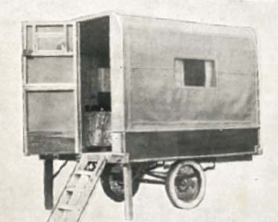
Soon after Eccles, other small concerns began building car-pulled trailer caravans in the early 1920s, such as Cliffe, who built mainly to the customer’s specification.
Caravan production was a hand-built affair and construction and design harked back to the horse-drawn caravans. The Caravan Club at first refused to let these new motorised caravans and trailer caravans into the club. After the war, horse-drawn caravans were still used, but this would change as motor caravans and trailer caravans gained popularity.
In 1914 the Riley’s father-and-son team (confusingly they were both named Bill) built a primitive motorhome, on a 1909 Talbot chassis. The plan was to produce these on a commercial scale, but the war put an end to the venture. When Bill Riley Junior was de-mobbed he convinced his father that trailer caravans had a future – though his father wasn’t totally convinced. However, by 1919 the Eccles Transport Company (a run-down concern that the Rileys had purchased after the war) had produced a motor caravan and a touring caravan. Both were sold so the decision was made to go into serious production. But the Rileys would need to market the idea of holidaying with a car-pulled caravan. With prices of £95 or more for a caravan, caravanning would still be limited to the rich.
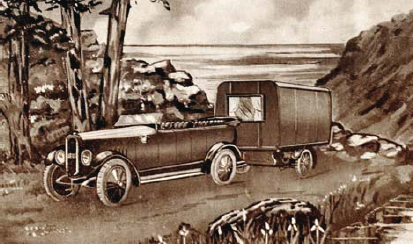
The first commercially built touring caravan was designed and manufactured in 1919 by Eccles, a company at the forefront of motorhome design and manufacture.
Marketing was left to Riley Junior who towed the Eccles using his Rover car to various parts of the UK promoting the idea. It was a hard and slow process, with some sales being made to companies to either sell or hire out the Eccles caravans at a couple of pounds a week. One such company, The Holiday Caravanning Co. in Oxford, found that those who hired a caravan usually bought one after experiencing a caravanning break. These primitive caravans came equipped with a paraffin stove, lighting and cooking utensils.
No insulation or proper chassis was fitted and the tow hitch consisted of a leather pin coupling on the first Eccles; with no component manufacturers, the sparsely designed chassis was manufactured by the caravan producer. However, Eccles would soon become the true pioneers of both the coachbuilt motor caravan and touring caravan, plus the collapsible caravan design. The company also built showman specials with ornate designs demonstrating their high-quality craftsmanship.
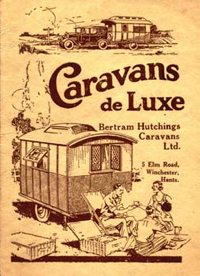
By the early 1920s Bertram Hutchings had turned to car-pulled caravans. Within a few years the Winchester name was used and known for its luxury and quality fittings.
New manufacturers soon appeared emulating Eccles; they saw the potential Eccles had shown in marketing as well as design and manufacture. Wilkinson Cox, founder of Raven and inventor of the caravan ‘screw’ corner steady, produced his early models resembling horse-drawn designs (it wasn’t until the mid-1930s that Ravens became more aerodynamic).
Bertram Hutchings began his caravan-building career after he and his wife had lived in a horse-drawn model after they were married. Soon he designed and built his own caravan and before long he entered the caravan business. Like most of the early manufacturers Hutchings went over to trailer caravans but had been operating a fleet of horse-drawn caravans, which he branded Winchester, named after the town where the works were based.
Caravan-building couple Arthur and Joy Gardener were to begin building a range of touring caravans named Summerfield. Later re-named Cheltenham by the 1930s, the firm prospered. As with most early caravans of the 1920s, the early Summerfields were box-like in design, basic but light considering the heavy materials. Early caravan designs were influenced by popular cars of the period such as Austin Sevens, Jowetts, Rovers and Morris Minors. In those days most caravan manufacturers used the Molly Croft roof design, better known as the ‘lantern’ roof – which had a raised section in the middle with small opening windows. This design was heavy, complex and more expensive to produce, so was usually fitted to deluxe models, but it offered more headroom and improved ventilation.
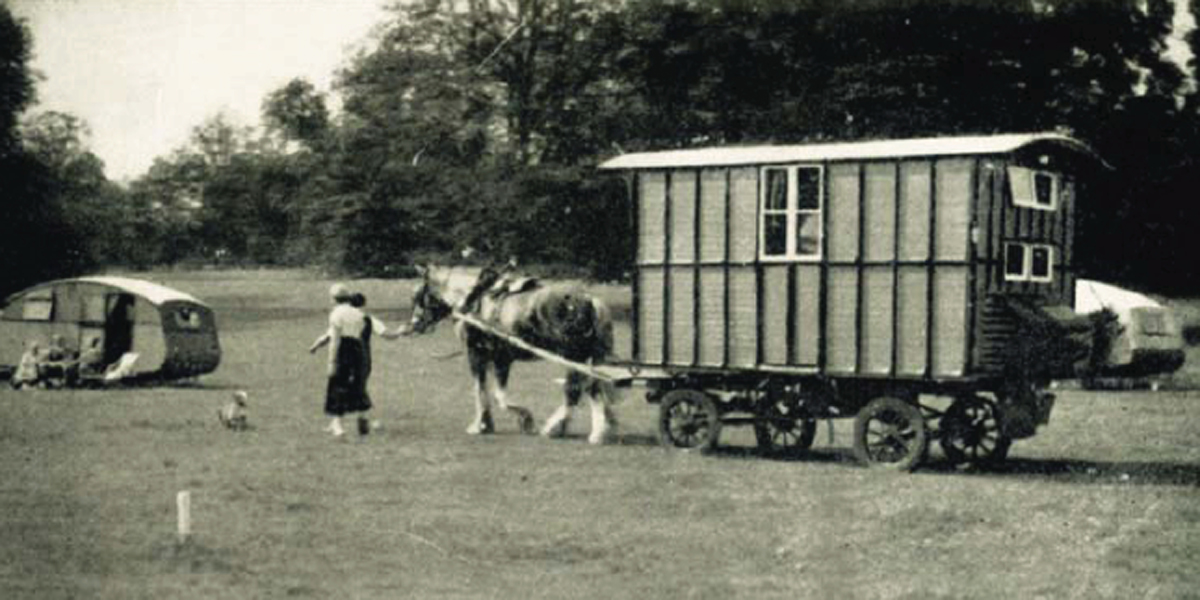
Hutchings’ first venture into caravans began with this horse-drawn caravan; within a few years Hutchings had a small fleet available for hire.
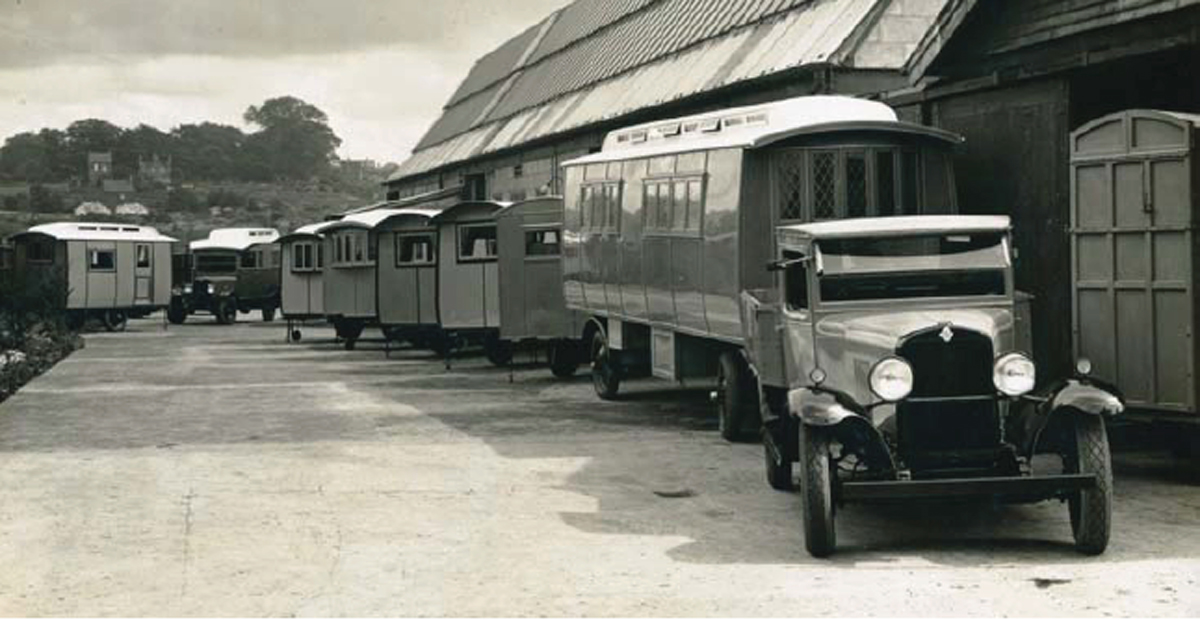
Eccles was ahead of the competition in both design and manufacture of the early touring caravan. This is the Eccles factory in 1927 – the biggest in the world at the time.
Another notable maker of this period was Piggott, who in five years of production created some interesting designs from just 3-metre body lengths. They used ideas such as bay windows that could be folded away for towing, opening out again once sited. Piggott also produced caravans with rear verandas and patented a construction method used in aircraft manufacture at the time.
Melvin Hart was another early pioneer of the touring caravan, though motorhomes was his main business. However Flatvan, Hart’s company brand name, built super luxury motorhomes sometimes complete with a Flatvan trailer caravan on tow! Hart sold his caravans to the super rich, including to maharajahs, who demanded lavish interiors and only the best in quality and materials.
The Scottish firm Thomson, who were joiners, entered small-scale caravan manufacture in 1922 after building a few motor caravans. Very similar in design to Eccles caravans of that period Thomson would by the late 1920s move towards more streamlined designs. Many years later Thomson became a larger concern and well known in caravanning circles. Angela was another new 1920s maker, basing their models on the Eccles look. (The company was named after the founder’s daughter Angela!)
Eccles had built collapsible caravans for a short time, but other makers such as Shadow from Coventry proved a greater success with their 1925 collapsible design. Trailavan in Birmingham had a folding caravan with solid sides and a solid roof that extended upwards. Once pitched, canvas was used to make up the top half of the caravan. Rice trailers used the same principle, becoming better known from 1925. Rice owners boasted of long continental trips with their Yorkshire-built folders, a fact that the makers were only too keen to use as PR.
Charles Ensor in the 1920s had fold-out kitchen extensions and toilet compartments in his caravan designs; such was the imagination used by those early makers. By the end of the 1920s caravanning had grown in popularity. Eccles was clearly ahead of the rest of the field with its modern production plant. Many new manufacturers would, like Eccles, operate small hire fleets to encourage buying customers. With car ownership rising and the middle classes also now being able to afford cars, caravanning would reach new heights.
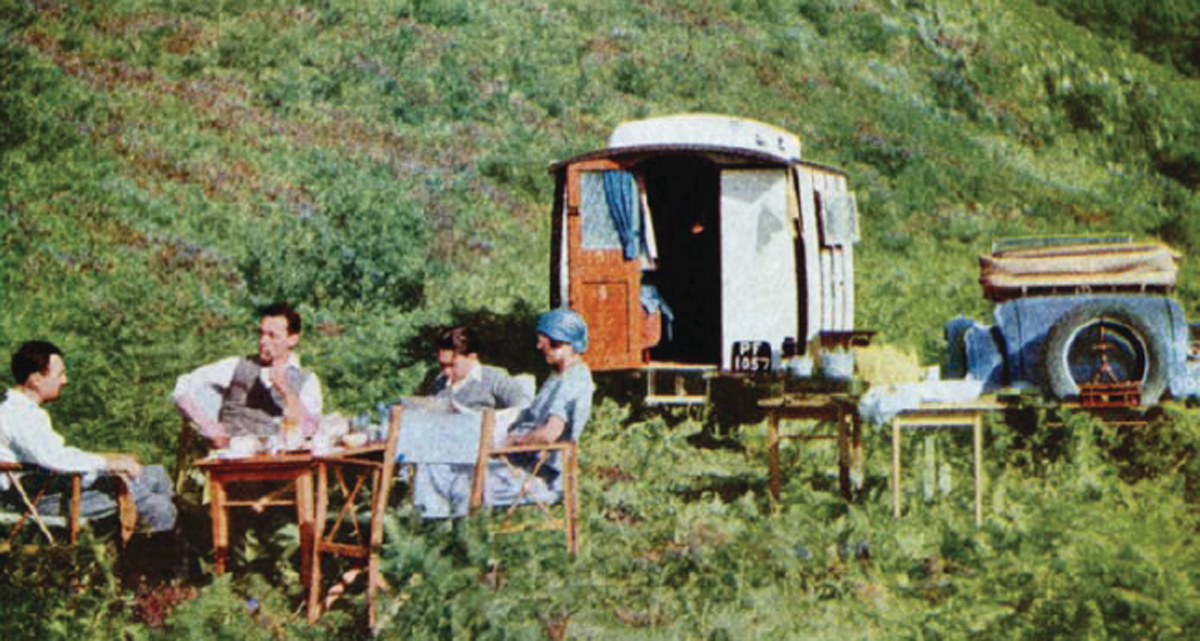
Rare colour photograph of a 1920s Eccles Deluxe in the Devon countryside. Posed to show how good caravanning was for mind, body and soul, it was marketed as a way to forget everyday worries!